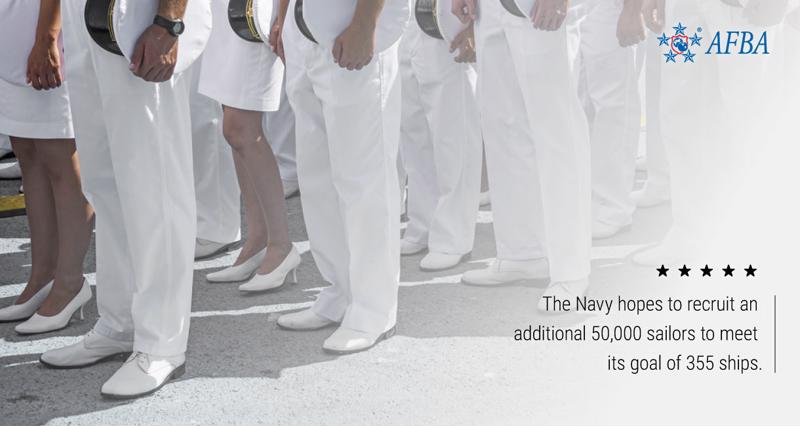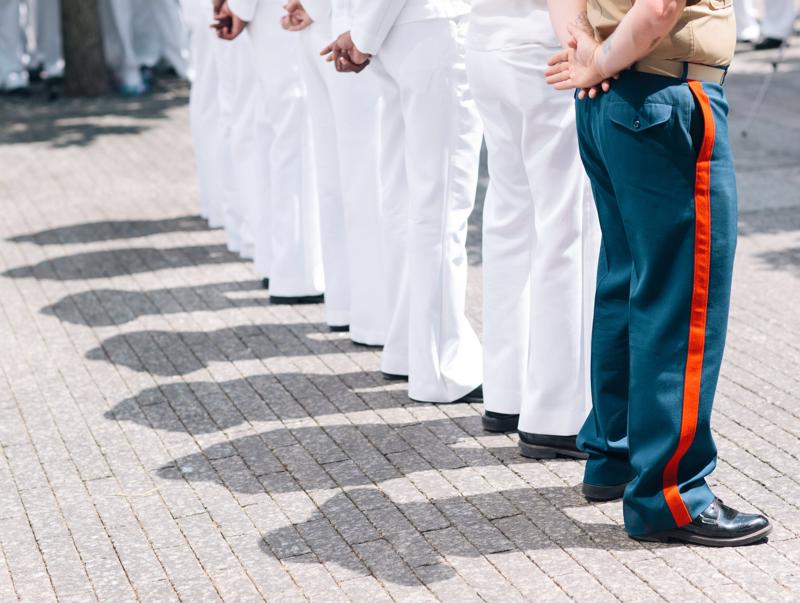The Navy is taking a comprehensive approach to recruit and retain servicemembers during a time when the U.S. economy is doing exceptionally well. Unemployment is the lowest it's been in 18 years, which should be good news for recruiting efforts. In truth, however, this means the Navy faces stiff competition from other military branches and the private sector. What's more, interest in joining the military usually drops as the economy improves. Not only are qualified individuals choosing jobs, but parents push students to go to college rather than enlist.
Finally, more than 70 percent of Americans of prime recruiting age can't serve due to obesity, criminal records or a lack of high school diploma or GED. Combined, these circumstances spell trouble for the Navy. The military branch is about 11,000 sailors short of what it needs to man its current fleet, and it will need about 50,000 more to meet its goal of 355 fully crewed ships.
According to an article from Military.com, Navy Secretary Richard Spencer expressed his concerns over the state of the branch's recruitment efforts during the Naval War College's annual two-day Current Strategy Forum.
"As the economy improves, we compete," said Spencer, per the article. "The game is now in our court to do the best we can to have the tools that we need to recruit, train and retain the best that our country has to offer."

Strategies to boost Navy recruitment efforts
President Donald Trump requested $686.1 billion for the military in his budget proposal for next year. The Navy should get a portion of that, and many funds will likely go toward recruiting.
The Navy also announced a new program that would allow sailors who leave to rapidly reenlist in a few years. Further, as the U.S. Naval Institute reported, the military branch increased the pace of its sea-going apprentice program: the long-running Professional Apprenticeship Career Track (PACT). Now, new sailors sign a three-year contract instead of a four-year enlistment. This gives them an idea of the various Navy jobs available and puts them on the path to a career sooner. This strategy boosts retention and encourages sailors to reenlist.
The goal of this change to PACT is to better match the wishes of new sailors with the needs of the military, according to Navy Branch Head for Enlisted Plans and Policy, Capt. Mery-Angela Katson. New sailors will take jobs at sea and work alongside other, trained servicemembers in one of three basic career paths: surface warfare, engineering or aviation.
"It's a way to give sailors the ability to look at jobs in these tracks and then give them a specific skills training pipeline to become rated sailors and continue on in that path through advancement and a career in the Navy," Katson said to USNI News.
Finally, the Navy is revising its typical recruitment strategies. According to Military.com, it's considering hiring private-sector professionals who are in the middle of their careers. Per Secretary Spencer, this strategy would help the military find and recruit top talent in a competitive market.
Additionally, per an NPR broadcast, the military branch is creating ads aimed at centennials, who are described as members of the first generation born with access to the internet. These ads are an attempt to dispel the notion that the military is the last hope for young people with nowhere else to go.
Combined, these strategies should increase the number of new sailors recruited into the Navy and improve retention numbers. Hopefully, the Navy will have no trouble meeting its manpower goals over the next few years.


